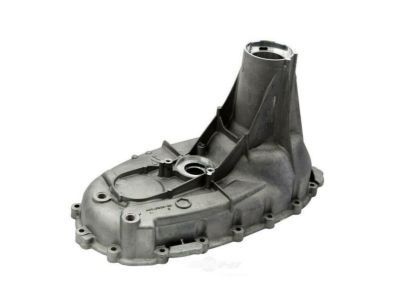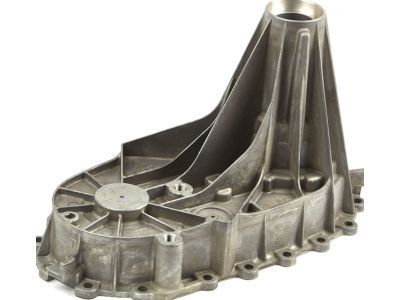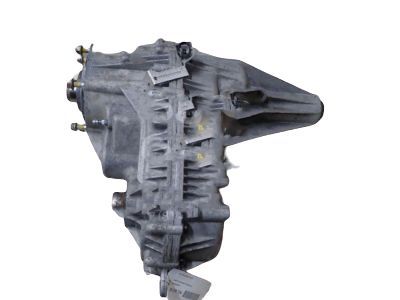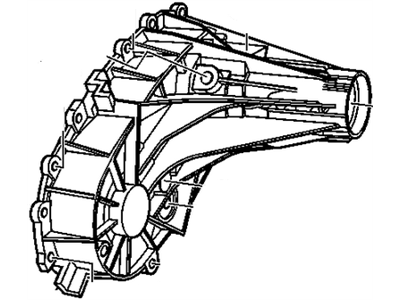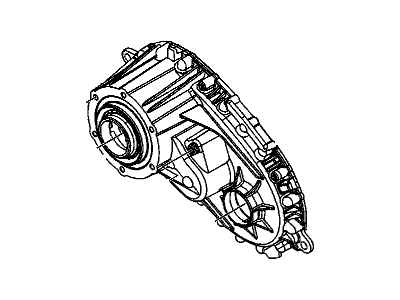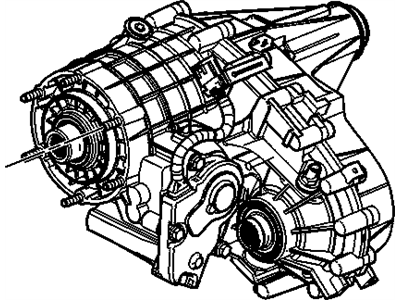
My Garage
My Account
Cart
Genuine Cadillac Transfer Case
Speed Transfer Case- Select Vehicle by Model
- Select Vehicle by VIN
Select Vehicle by Model
orMake
Model
Year
Select Vehicle by VIN
For the most accurate results, select vehicle by your VIN (Vehicle Identification Number).
105 Transfer Cases found
Cadillac Transfer Case Rear Case
Part Number: 23253658$172.43 MSRP: $297.43You Save: $125.00 (43%)Ships in 1-2 Business DaysProduct Specifications- Other Name: Case Assembly, Transfer (Rear Half)
- Position: Rear
- Replaces: 19133141
Cadillac Rear Half Transfer Case
Part Number: 12474949$524.23 MSRP: $1134.23You Save: $610.00 (54%)Ships in 1-2 Business DaysProduct Specifications- Other Name: Case,Transfer(Rear Half)
- Position: Rear
- Replaces: 12547663
Cadillac Transfer Case Assembly (Blackwall 4485)(Code Mm)
Part Number: 24246762$3093.25 MSRP: $3499.14You Save: $405.89 (12%)Ships in 1-3 Business DaysProduct Specifications- Other Name: Case Assembly, Transfer (Blackwall 4485)(Code Mm) ; Case, Transfer Case; Transfer Case
- Replaces: 12578118, 24238887, 24243314
Cadillac Transfer Case (Rear Half)
Part Number: 12473226$431.81 MSRP: $688.69You Save: $256.88 (38%)Ships in 1-2 Business DaysProduct Specifications- Other Name: Case,Transfer (Rear Half)
- Position: Rear
Cadillac Transfer Case (Rear Half)
Part Number: 12478092$868.29 MSRP: $1484.72You Save: $616.43 (42%)Ships in 1-2 Business DaysProduct Specifications- Other Name: Case,Transfer (Rear Half)
- Position: Rear
Cadillac Transfer Case Assembly (Front Half)
Part Number: 19132934$335.61 MSRP: $535.27You Save: $199.66 (38%)Ships in 1-3 Business DaysProduct Specifications- Other Name: Case Asm,Transfer (Front Half)
- Position: Front
- Product Specifications
- Replaces: 23164254, 84109398, 84260086, 84007378, 84346721, 84153006, 84467440, 84377719, 23311899, 84605824
Cadillac CASE ASM-TRFER
Part Number: 85580976$1261.40 MSRP: $1415.06You Save: $153.66 (11%)Ships in 1-3 Business DaysProduct Specifications- Other Name: Transfer Case
- Replaced by: 85843420
- Product Specifications
- Other Name: Transfer Case
- Replaces: 23188340, 23164314, 84109394, 84377715, 24250805, 24256217, 24256472, 23143114, 84153002, 24239189, 24261514, 24262510, 24250861, 23311900, 84605819, 84467435, 24252679
Cadillac CASE ASM-PWR TRFER U
Part Number: 86533976$1460.51 MSRP: $1652.16You Save: $191.65 (12%)Ships in 1-2 Business DaysProduct Specifications- Other Name: Transfer Case
- Replaces: 84425923, 84622332, 84331394, 84715383, 85136879, 84893573, 84930554, 86805249, 84785332
- Product Specifications
- Replaces: 23311902, 24256221, 24262496, 24253505, 24256476, 84153004, 84467438, 23143110, 23164320, 24261560, 84260084, 84109396, 23188336, 84605822, 84377717
Cadillac Transfer Case (Remanufacture)
Part Number: 24228420$3060.32 MSRP: $3454.78You Save: $394.46 (12%)Ships in 1-3 Business DaysProduct Specifications- Other Name: Case,Transfer (Remanufacture); Transfer Case
- Replaces: 24239524
Cadillac CASE ASM-PWR TRFER U
Part Number: 86798719$1678.10 MSRP: $1898.29You Save: $220.19 (12%)Ships in 1-3 Business DaysProduct Specifications- Other Name: Transfer Case
- Replaced by: 86550991
- Replaces: 84425921, 84622331, 84893574, 23405077, 24264740, 84217905, 84110472, 84058585, 84989578, 84370597
Cadillac CASE ASM-TRFER
Part Number: 87842230$2003.04 MSRP: $2258.75You Save: $255.71 (12%)Ships in 1-2 Business DaysProduct Specifications- Other Name: Transfer Case
- Replaces: 84153003, 84260083, 84377716, 84467437, 84605821
Cadillac Transfer Case Assembly (Remanufacture) Np0 Mp3010
Part Number: 19125661$3152.48 MSRP: $3559.03You Save: $406.55 (12%)Ships in 1-3 Business DaysProduct Specifications- Other Name: Case Asm,Transfer (Remanufacture) Np0 Mp3010
Cadillac CASE ASM-TRFER
Part Number: 85580975$793.82 MSRP: $886.12You Save: $92.30 (11%)Ships in 1-3 Business DaysProduct Specifications- Other Name: Transfer Case
- Replaced by: 85843419
Cadillac Transfer Case Assembly
Part Number: 84154807$2285.56 MSRP: $2585.48You Save: $299.92 (12%)Ships in 1-3 Business DaysProduct Specifications- Other Name: Case Assembly, Transfer; Transfer Case
- Replaces: 23401355, 24266321, 23480424, 22975212
Cadillac Transfer Case Assembly (Goodwrench Remanufacture) (W/ Gears) Nvg261 Hd1
Part Number: 24228435$2316.41 MSRP: $2613.25You Save: $296.84 (12%)Ships in 1-3 Business DaysProduct Specifications- Other Name: Case Asm,Transfer (Goodwrench Remanufacture)(W/Gears)Nvg261 Hd1 ; Case, Transfer Case; Transfer Case
Cadillac CASE ASM,TRFER (REMAN)<SEE GUIDE/CONTACT BFO>
Part Number: 19125974$2931.24 MSRP: $3308.75You Save: $377.51 (12%)Cadillac Case Asm,Transfer (Remanufacture W/Gears)Nvg263 Eau Shd Bcc Gn
Part Number: 24228417$2918.65 MSRP: $3294.52You Save: $375.87 (12%)Product Specifications- Other Name: CASE, Transfer case; Transfer Case
| Page 1 of 6 |Next >
1-20 of 105 Results
Cadillac Transfer Case
For superior quality and affordable Cadillac Transfer Cases, consider our website. We proudly present a wide selection of genuine Cadillac Transfer Cases at unbeatable prices. These OEM parts, supported by the manufacturer's warranty, are also eligible for our hassle-free return policy and swift delivery service.
Cadillac Transfer Case Parts Questions & Experts Answers
- Q: How to disconnect and remove the transfer case on Cadillac Escalade?A:Disconnect the cable from the negative terminal of the battery. On models with a manually shifted transfer case, put the transfer case in the 2WD High position. Raise the vehicle and support it securely on jackstands. Remove the stone shields (skid plates), if equipped. Drain the transfer case lubricant. Remove the front and rear driveshafts. Unplug all electrical connectors and detach the vent hose from the top of the transfer case, including the wiring harness retaining clips. If necessary, disconnect the transfer case vent tube. On manually shifted models, disconnect the shift linkage from the transfer case by pulling the shift linkage ball socket off the ball pivot on the transfer case shift lever. Raise the transmission enough to remove the crossmember, and support the transmission with a floor jack. If necessary, remove the transmission mount from the transmission. Support the transfer case with a jack, preferably a special jack made for this purpose, using safety chains to help steady it. Remove the transfer case adapter-to-transmission mounting nuts, noting that on some models, the fuel line bracket may be attached by these nuts. Make a final check that all wires and hoses have been disconnected from the transfer case, then move the transfer case and jack toward the rear of the vehicle until it's clear of the transmission, keeping the transfer case level. Once the input shaft is clear, rotate the transfer case as necessary, lower it, and remove it from under the vehicle. Remove the adapter-to-transfer case bolts and the adapter as needed. Before installation of the transfer case and adapter to the transmission, apply lubricant to the splines on transmission/transfer case combinations where the input shaft is dry. Installation is the reverse of removal, replacing the gasket with a new one and ensuring to tighten the transmission-to-transfer case nuts to the specified torque. On manually shifted models, adjust the transfer case shift linkage accordingly.
